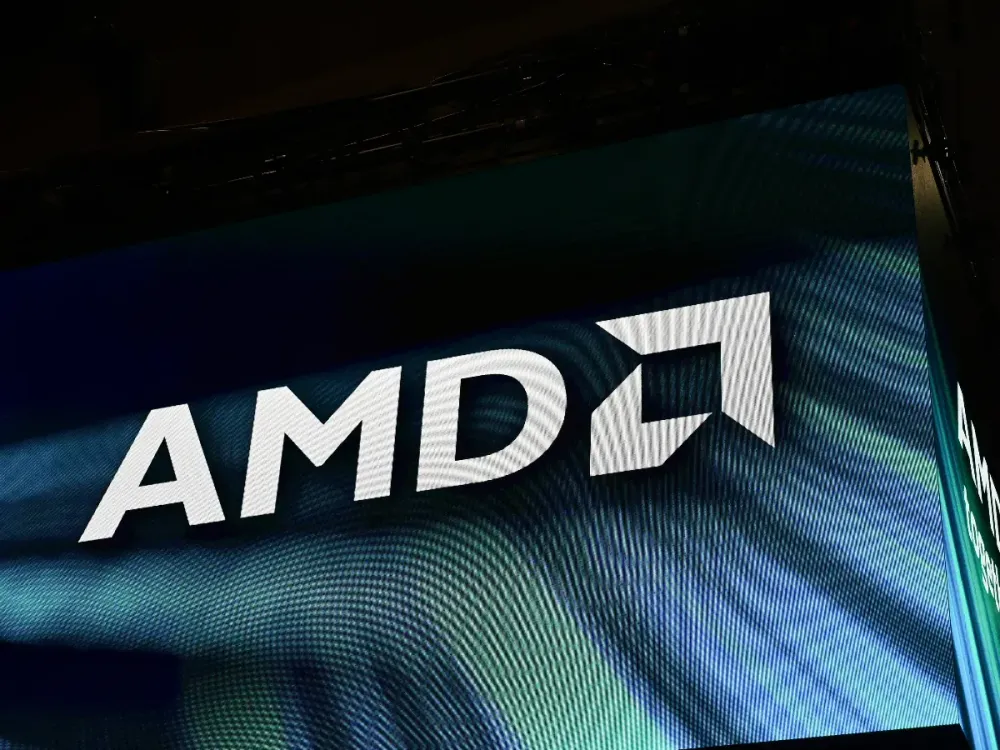Advertisement|Remove ads.
AMD Teams With Department of Energy On $1 Billion Supercomputing Project: Report

Advanced Micro Devices (AMD) has reportedly partnered with the U.S. Department of Energy on a $1 billion initiative to build two next-generation supercomputers.
Energy Secretary Chris Wright and AMD CEO Lisa Su told Reuters that the systems will tackle complex scientific challenges, including nuclear energy research, cancer treatments, and national security applications.
AMD’s stock edged 0.32% higher in midday trade on Monday, paring gains after hitting an intra-day record high of $258.47. On Stocktwits, retail sentiment around the stock improved to ‘neutral’ from ‘bearish’ territory.
Lux Supercomputer To Launch Within Six Months
According to the report, the first system, named Lux, is scheduled to come online within six months. Lux will leverage AMD’s MI355X artificial intelligence chips alongside AMD CPUs and networking components. The project is co-developed with Hewlett Packard Enterprise (HPE), Oracle Cloud Infrastructure (ORCL), and Oak Ridge National Laboratory (ORNL).
AMD CEO reportedly said the Lux deployment was the fastest deployment of this size of computer that she has seen. Meanwhile, ORNL Director Stephen Streiffer stated that the Lux supercomputer will deliver about three times the AI capacity of current supercomputers.
"This is the speed and agility that we wanted to [do] this for the U.S. AI efforts."
– Lisa Su, CEO, Advanced Micro Devices
Discovery Supercomputer To Follow In 2029
The second system, Discovery, will be more advanced and based on AMD’s MI430 AI chips designed specifically for high-performance computing, the report said. ORNL, HPE, and AMD will lead the design, with delivery expected in 2028 and full operational capability projected for 2029. Discovery is intended to support large-scale simulations and AI workloads that push the boundaries of computational research.
"We're going to get just massively faster progress using the computation from these AI systems that I believe will have practical pathways to harness fusion energy in the next two or three years."
– Chris Wright, U.S. Secretary of Energy
Wright added that the supercomputers would also help manage the U.S. nuclear weapons stockpile and advance drug discovery by simulating cancer treatments at the molecular level. “My hope is in the next five or eight years, we will turn most cancers, many of which today are ultimate death sentences, into manageable conditions,” he said.
The report said the Department of Energy will host the computers, while the companies will provide the machines and capital investment. Both sides are expected to share access to the systems’ computing power.
For updates and corrections, email newsroom[at]stocktwits[dot]com.













/filters:format(webp)https://news.stocktwits-cdn.com/large_Jared_Isaacman_jpg_cc2f5c5fc6.webp)
/filters:format(webp)https://st-everywhere-cms-prod.s3.us-east-1.amazonaws.com/unnamed_jpg_9dff551b50.webp)
/filters:format(webp)https://news.stocktwits-cdn.com/large_medirom_jpg_be3a5606ef.webp)
/filters:format(webp)https://news.stocktwits-cdn.com/IMG_8805_JPG_6768aaedc3.webp)
/filters:format(webp)https://st-everywhere-cms-prod.s3.us-east-1.amazonaws.com/large_american_airlines_resized_546ba616ea.jpg)
/filters:format(webp)https://news.stocktwits-cdn.com/large_Getty_Images_2239625136_jpg_c8b5d46596.webp)
/filters:format(webp)https://news.stocktwits-cdn.com/large_blue_origin_jpg_dfcbbe7454.webp)
/filters:format(webp)https://news.stocktwits-cdn.com/large_Robotaxi_Tesla_jpg_209f017098.webp)
/filters:format(webp)https://st-everywhere-cms-prod.s3.us-east-1.amazonaws.com/shanthi_v2_compressed_98c13b83cf.png)